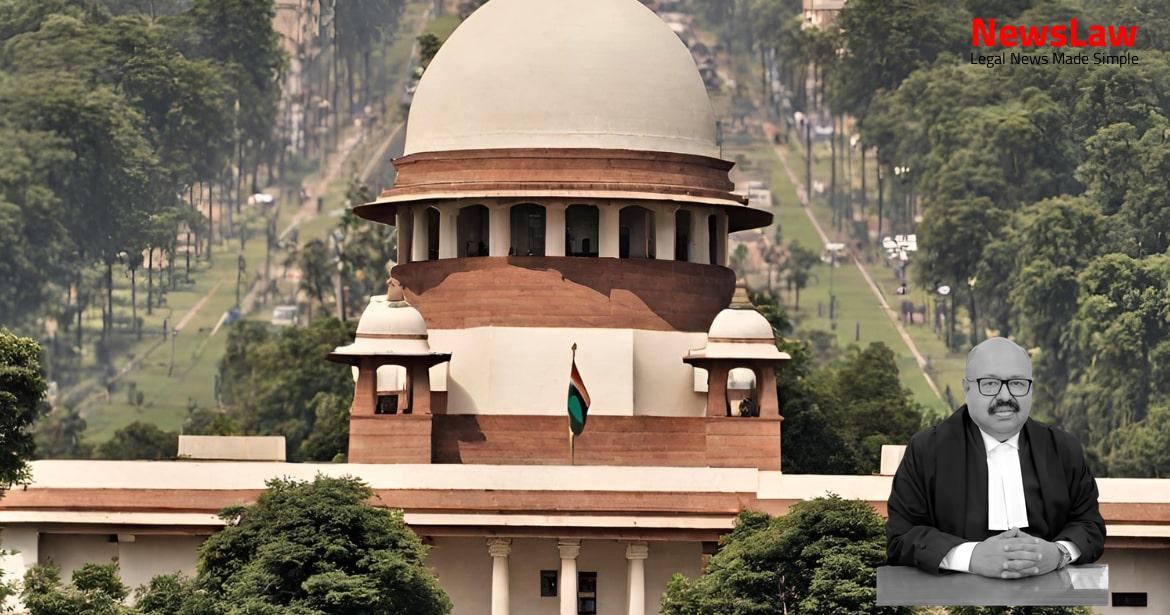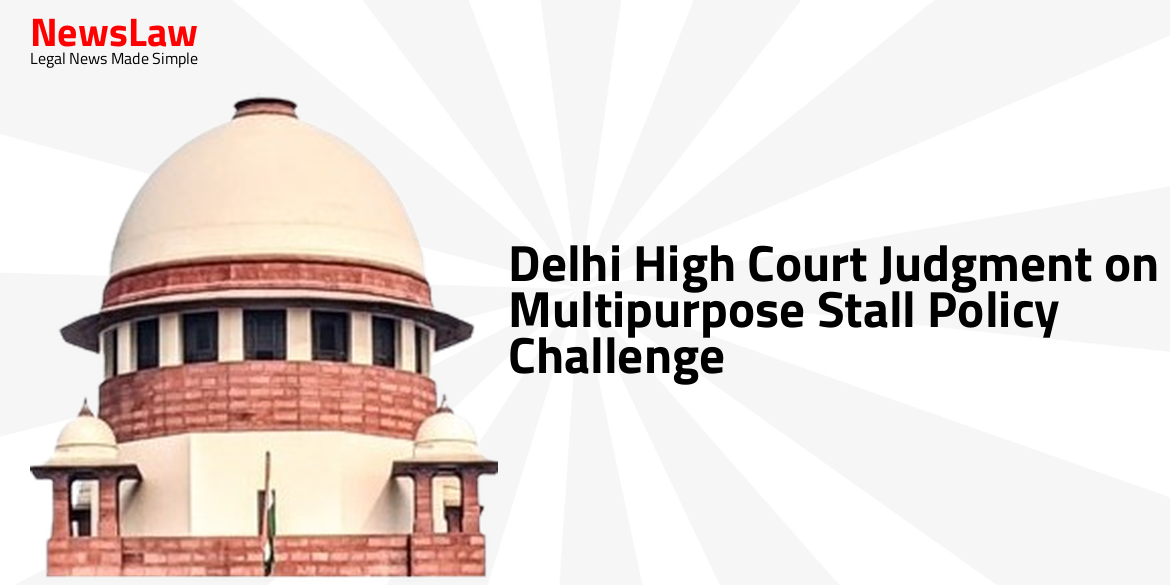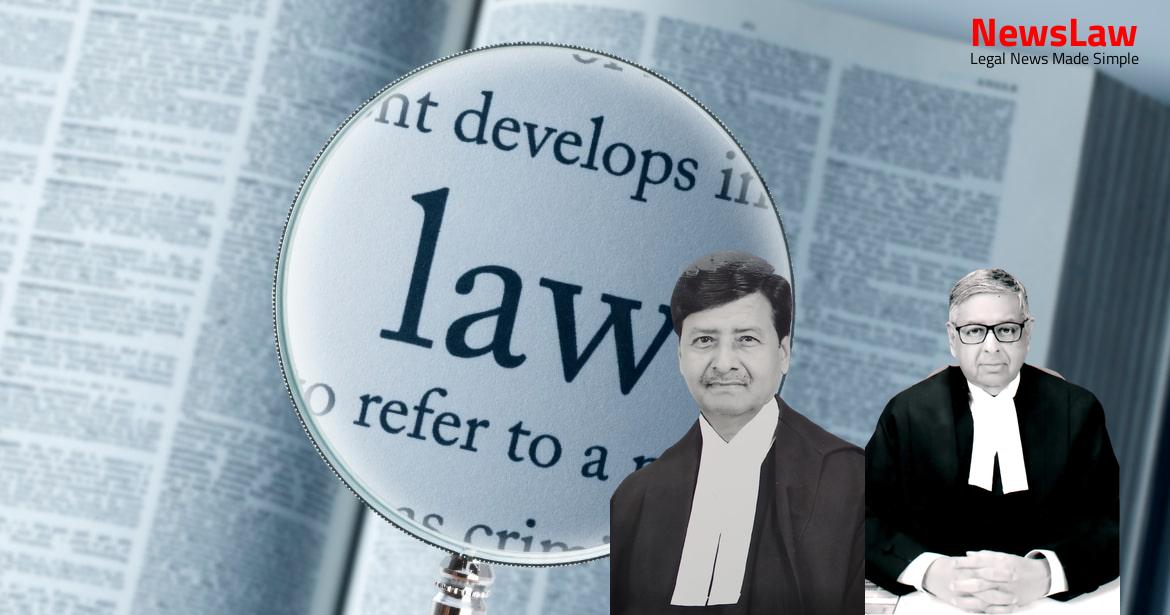Explore the complexities of legitimate expectation within environmental clearance regulations through a detailed analysis of a recent legal case. The case delves into the court’s interpretation and application of the doctrine, emphasizing the need for stability and predictability in governmental decisions. Stay tuned to understand how the court balanced public interest with the legitimate expectations of the parties involved, providing crucial insights into the rule of law and administrative procedures.
Facts
- NGT’s order on 17.11.2020 deemed constructions irregular and directed remedial measures
- NGT’s order was challenged and remitted back for further hearing
- Challenge on OA’s limitation rejected as cause of action arose in 2017
- Authorities directed to take coercive action against Project Proponent for post-8.12.2017 constructions
- NGT allowed protection of existing constructions but mandated EC for further construction under current regime
- Project Proponent initially complied with pre-amendment procedures before regime change
- NGT invalidated parts of 2016 notification but did not nullify ECs granted under altered regime
- NGT directed MoEFCC to amend notification based on 8.12.2017 judgment
- OA No. 83/2019 filed alleging construction without valid EC after Project Proponent obtained PCMC permission on 8.12.2017
- NGT invalidated certain clauses of 2016 notification affecting EC approval by PCMC
- State of Maharashtra issued clarification not to process pending applications after NGT judgment
- NGT’s judgment made PCMC the competent authority for EC after amendment on 9.12.2016
- Project Proponent had to reapply to PCMC due to change in competent authority
- Current appeals challenge NGT’s judgment in OA No 83/2019 protecting existing constructions but mandating EIA for further construction based on PCMC-issued EC
- Project Proponent had initially commenced construction with a sanction plan of 15040.05 sq. mtrs., which did not require a prior EC as it was below the threshold limit of 20,000 sq. mtrs.
- For the proposed expansion to a total constructed area of 49,012 sq. mtrs., the Project Proponent obtained the ‘Proposed Development Certificate’ on 28.11.2016 to apply for EC.
- Due to the changed regime under the MoEFCC notification dated 9.12.2016, the Project Proponent applied to PCMC on 10.7.2017 and was sanctioned EC by the local authority on 28.11.2017.
- The new regime allowed EC to be obtained from the Environmental Cell of a local authority, such as the PCMC, as per the notification dated 9.12.2016.
- The State of Maharashtra adopted the new environmental clearance conditions specified in the MoEFCC notification dated 9.12.2016.
- The Project Proponent applied for EC under the 2016 notification, which was considered by the Environmental Cell of the PCMC as per the new regime.
- The required approval for construction was issued by the Corporation on 28.11.2016, specifying environmental conditions for buildings and constructions.
- The NGT constituted a three-member Committee to verify the construction, which noted the completion of a total built-up area of 22930.17 sq. mtrs. for certain buildings.
- The NGT’s decision protected the standing construction but limited the impact of the judgment on further construction by the Project Proponent.
Also Read: Insurance Claim Repudiation due to Fire Incident: Court’s Legal Analysis
Arguments
- The NGT protected already erected buildings and this protection should not be impacted by previous judgments.
- The NGT’s earlier invalidation order did not suggest any adverse action against pre-existing structures.
- The NGT, as an expert body in environmental matters, leaned towards protecting already constructed structures.
- The original applicant argued that the construction should be prevented and penalties imposed due to the invalidated provisions of the MoEFCC’s notification.
- The learned ASG stated that the competent authority to grant Environmental Clearance is the PCMC, not the SEIAA.
Analysis
- The principle of the rule of law must operate in the present matter, ensuring regularity, predictability, and certainty in government’s dealings with the public.
- Subsequent notifications by the MoEFCC granted power to grant EC to the local authority, specifically the PCMC.
- The Delhi High Court stayed the notifications of the MoEFCC on 26.11.2018 in the WP(C) No 12517/2018.
- The NGT committee found substantial compliance by the Project Proponent in obtaining EC from the competent local authority.
- NGT judgment protected the already made construction but restrained further construction without clearance from statutory EC and adherence to environmental norms.
- NGT expert committee report confirmed that the Project Proponent obtained EC from the competent authority, the Environmental Cell of the PCMC.
- Doctrine of Legitimate Expectation is attracted in such situations, expecting authorities to adhere to prevalent norms without uncertainty for executed projects.
- Project Proponent can legitimately expect stability in the environmental regime and application processing.
- The expectation of the claimant being reasonable or legitimate is a question of fact in each case
- Failure to consider and give due weight to a reasonable or legitimate expectation may render a decision arbitrary
- The legitimate expectation of a party may be outweighed by more important considerations in the larger public interest
- The doctrine of legitimate expectation is assimilated in the rule of law and operates within the legal system
- A balance must be found between the compelling public interest and the legitimate expectation of a party
- When a public authority promises to follow a certain procedure, it should act fairly and implement the promise if it doesn’t interfere with its statutory duty
- The concept of legitimate expectation was elucidated in the case of Council of Civil Service Unions & Ors. vs. Minister for the Civil Service
- For a legitimate expectation to arise, the decision of the administrative authority must affect the person by either depriving them of past benefits or advantages or contrary to assurances given by the decision maker
- The requirement of due consideration of a legitimate expectation is part of the principle of non-arbitrariness, a necessary aspect of the rule of law
- The appellant has made substantial investments based on the EC and should not be pushed to a precipice.
- It is unreasonable to expect the appellant to anticipate changes in EC regimes due to judicial interventions and keep revisiting sanctioned clearances.
- The appellant should not be expected to seek approvals from unauthorized authorities.
- Such a scenario would lead to an eternal and inconclusive process.
- NGT has protected the completed construction and this decision is endorsed by the court.
- The appellant has followed the legal framework diligently.
- Third-party interests have also become involved during the process.
Decision
- The four constructed buildings are now considered to be under a valid Environmental Clearance (EC) with all legal consequences.
- For any further construction, fresh clearance from the competent authority is required based on the current framework.
- If any additional construction is proposed with the sanctioned layout, it cannot be done under the EC granted on 28.11.2017 by the PCMC.
- The appeals are disposed of without any order on cost.
Case Title: M/S SAI BABA SALES PVT. LTD. Vs. UNION OF INDIA (2021 INSC 795)
Case Number: C.A. No.-000595 / 2021



